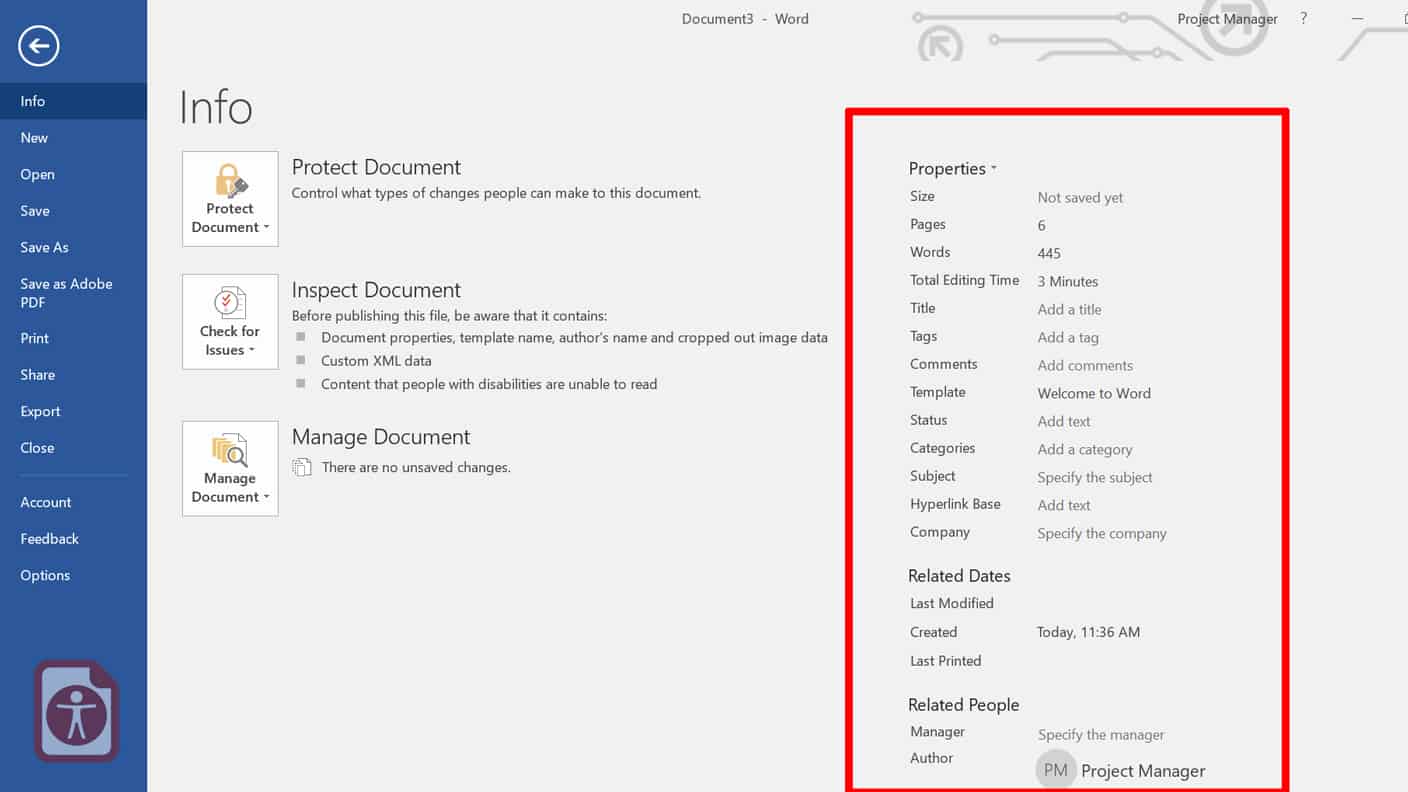Accessible Word Document Checklist
For creating accessible Word documents.
First off, planning your word document for accessibility will bring the best results. This will also save time if you plan to convert the document into PDF format later. Before you begin, be sure to check out our article on Creating Accessible Documents for some useful tips on designing with accessibility in mind. When working in Word, you should turn on the formatting marks. It makes the document’s formatting easier to visualize.
Text justification
- Do not use justified or centered alignment for text. Left aligned text is the most readable type of text.
- Wherever possible, set the text wrapping for all non- text elements, such as images, graphs, charts, diagrams etc. to be ‘in-line with text’. See the layout options for this setting.
- Avoid using the text-boxes function. These are floating objects and can cause reading order problems for assistive technologies.
Paragraph spacing
Avoid using empty carriage returns (pressing enter multiple times) to create blank space. Adjust the paragraph spacing instead. Set these line spacing options for paragraphs properly then update the “Normal” style. This makes it possible to always use the same formatting for every paragraph that will be created in the document.

To adjust the line spacing between individual paragraphs, go to “Home” tab on the ribbon and open the “Paragraph” dialogue box. Alternatively, you can right-click on the text and open the Paragraph dialog box from there. Use the before and after spacing settings.
Accessible links
Links should provide users with the proper context of where clicking the link will take them. Phrases such as “click here,” “more,” “click for details,” and so on are ambiguous when read out of context. Provide helpful clues to the content to which they lead. Do not leave link text as a raw URL. Use a screen tip, found inside the hyperlinks dialog box, to provide an alt-text for the link. Avoid using internal document links. The functionality of these for assistive technologies is not great.
Heading structure
Headings indicate the beginning of important sections within the content. Assistive technology users can use the list of headings to go directly to the desired content. Therefore, you should be sure to denote your headings by using the appropriate styles and not create normal text that visually appears as a heading. Do this by using the styles.

Word offers many default heading levels on the “Home” tab, in the “Styles” group, found on the ribbon. You can set your own formatting style if you do not wish to use the default styles provided by right clicking the style and choosing ‘Modify’.
- Do not use Heading 1 for your title page. Use the title style.
- For the table of contents heading, use the TOC Heading style.
- Use Heading 1 as top-level heading such as chapter or section titles.
- Use Heading 2 as sub-heading to Heading 1, Heading 3 as sub heading to Heading 2.. etc.
- You should only go forward one level at a time. (ie. moving from Heading 2 to Heading 4 would not be acceptable).
- You can go backwards in multiple steps (ie. Heading 4 to Heading 2.).
Table of contents
If your document is over 20 pages, create a table of contents. This can be done on the ‘References’ tab. The table of contents which is generated follows the hierarchical order of the headings used in the document. If you are exporting to PDF, be sure to check “Create bookmarks using: Headings” in the export options.
Headers & footers
Headers and footers are generated by Microsoft Word and are not read by assistive technologies such as screen readers. Do not include any relevant information in them. They should be used for decorative purposes only. One exception is page numbering, which can be put in the header or footer.
Footnotes and endnotes
If you have footnotes or endnotes, use the built-in formatting tools in Word to add them. Do not add them as normal text at the bottom of pages, or in footers. To create a footnote, go to “References” tab on the ribbon, then click on the “Insert Footnote” button. Try to limit footnotes or endnotes to one per page. Multiple footnotes or endnotes can confuse the reading order for some assistive technologies.
Add metadata and set the language
Fill in the metadata for your document. The document metadata is located in the file properties (author, title, tags and comments). You will also need to set the language for the document. You can find the language settings on the Review tab, or on the status bar at the bottom. If there are some parts of your document in different languages, you can set the language for specific selections by highlighting the text and adjusting the language for the selection only.

Alt-text descriptions
You will need to add alt-text descriptions for all non-text elements in your document. Please see our article on adding alt-texts descriptions for complete details.
Images, charts, graphs, diagrams
- Make them as simple as possible.
- Use captions to support charts, diagrams, graphs and images that convey meaning.
- Make sure that the captions add value to the reader who may be unable to see them.
- Communicate the insights that each is by writing a summary of the information that is being conveyed.
- Ensure that color or contrast is not the only means of communicating a result in a chart or diagram. Consider patterns instead.

Tables
- Tables should be used to represent tabular data, not to layout text on the page.
- Define the header rows for the table and repeat the header row at the top of each page (set these in the table properties).
- Keep your tables as simple as possible.
- Provide a caption or summary of the information presented in the table.
- Could the information in a table be represented in a simpler way using lists? Or using two separate simple tables?
- Use the table tools to create tables and not the ‘Draw Table’ option.
- Avoid merging and splitting cells.
Test your table by selecting the first cell of your table and then pressing the tab key. The focus should move across the row and then to the first cell next row down.
Check the color contrast
Ensure that there is enough contrast between the text color and the background color. This includes all text, images, charts, graphs etc. You should aim for at least a 70% difference in color value. Use a color contrast analyzer when in doubt.
What about the accessibility checker?
The accessibility checker that is built into Word is a great tool to help identify potential problems with your document. Be advised that the criteria for the accessibility checker do not correspond to any accessibility standard. In other words, satisfying the accessibility checker does not ensure that you are meeting WCAG 2.0, AODA, ADA, or Section 508 requirements. Check out our article on about accessibility checkers.
Let Us Take Care of It!
Most people don’t realize just how difficult and time consuming it can be to properly create accessible PDFs from Microsoft Word documents. It goes far beyond adding a few tags and some alt-texts. There are no easy shortcuts. Why waste your valuable time? Let us apply our expertise and make your Microsoft Word documents accessible for everyone.
Free Accessibility Testing
Not sure if your existing documents are accessible or not? We will evaluate them for you, for free!
Request a Quote
Need a price estimate for your documents? We are happy to provide you with a free quote.
